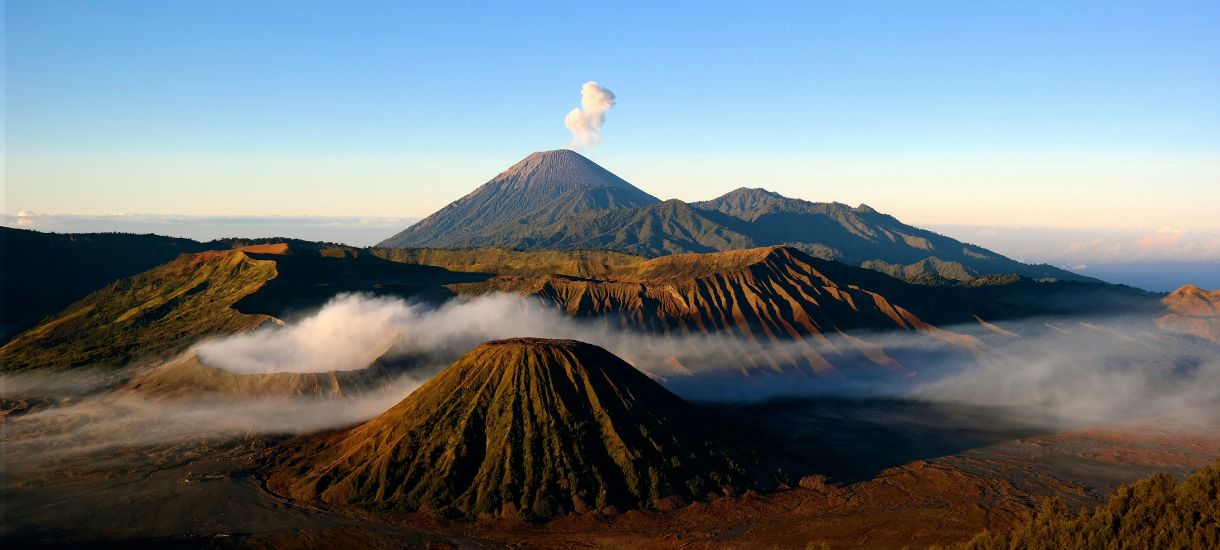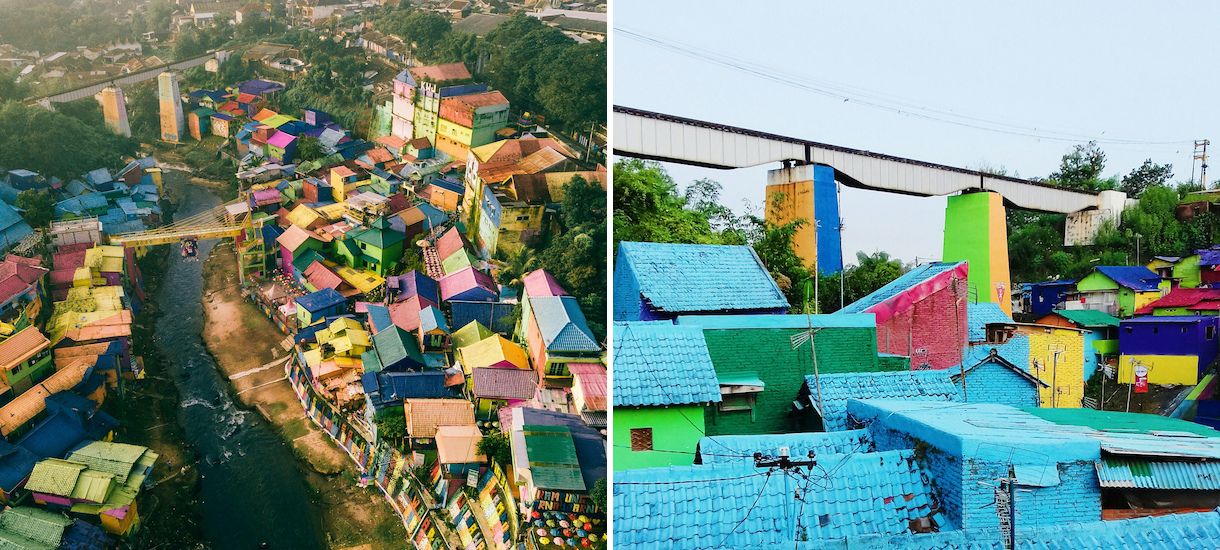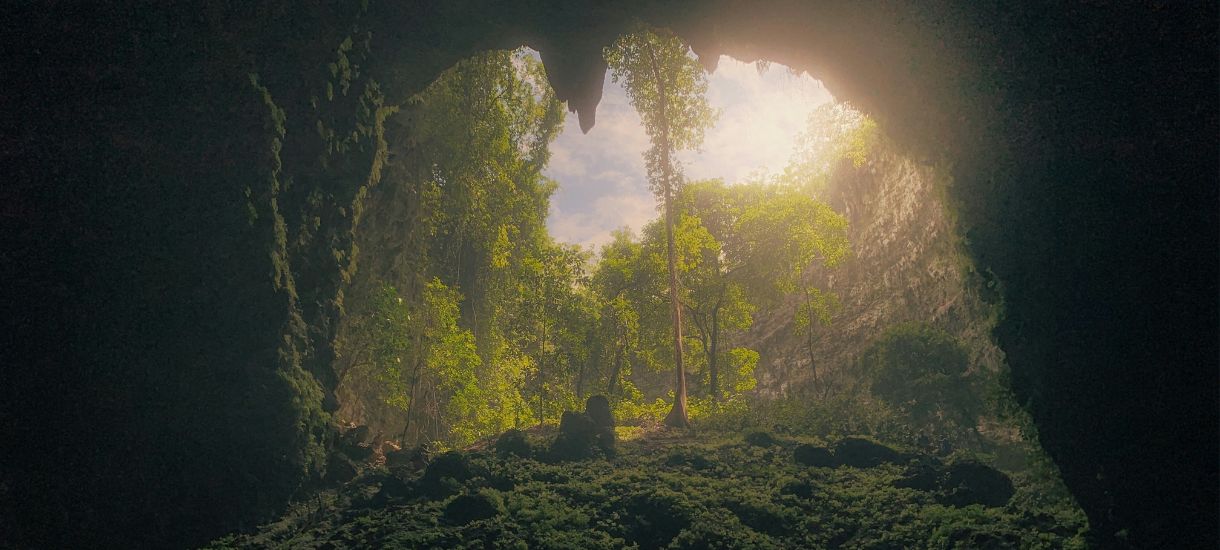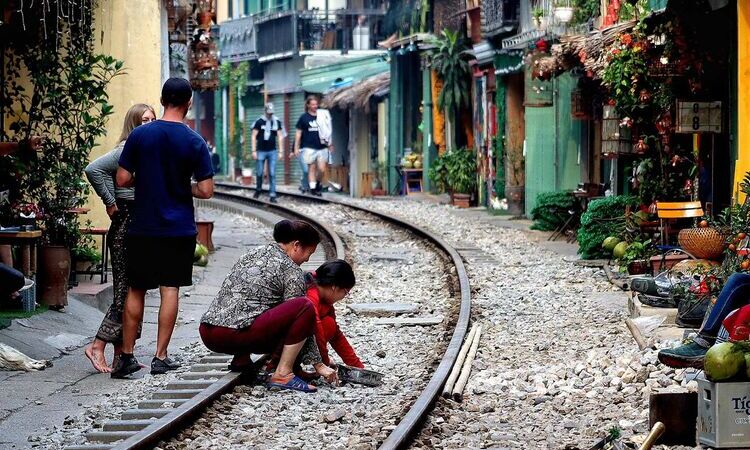Java Travel Wonders: Into the Heart of Indonesia
From Buddhist temples to historic streets to cascading waterfalls, discover the top things to do in Java in our Java travel guide.
Each year, millions of tourists flock to the Indonesian island of Java. As the 13th largest island in the world, Java has countless diversions to offer travelers. While that can leave you excitedly planning your journey, you may also be overwhelmed by the sheer number of Java attractions. What should you add to your bucket list? Let’s go over the top 8 things to do in Java.
Java Facts & Figures
Before we explore the attractions, let’s introduce the island.
- Area: 132,000 square kilometers - the fifth largest island in Indonesia.
- Population: 140 million people—about half of Indonesia’s total population. That makes it the most populous island on the planet.
- Java is well known for the chain of volcanoes that stretches from end to end. These majestic peaks are among the most dramatic Java attractions, but the lowlands are also worth exploring.
- Capital city: Jakarta, which is also its largest by population. Other major cities in Java include Surabaya, Bekasi, Bandung, Medan, and Depok.
Top 8 Things to Do in Java
1. Marvel at Borobudur - the world’s largest Buddhist temple
While you are in the central province, a must-see destination on your list of spiritual Java travel sites is the Mahayana Buddhist temple called Borobudur. As the largest Buddhist temple worldwide, this astonishing historical site boasts 504 Buddha statues and 2,672 relief panels. It was constructed in the 9th century and restored in 1911 and again in 1983.

While Borobudur is ancient, it remains an active, thriving center of worship today, drawing countless pilgrims every year. The immensity of the temple, the beautifully preserved details of its reliefs and statues, and the meditative atmosphere that pervades its terraces even on the busiest days will fill your heart with awe.
2. Visit Prambanan - a Hindu masterpiece
While the Buddhist temple of Borobudur is remarkable, it is certainly not the only ancient religious site worth visiting while you're in Java. In the southern part of the island is an astonishing Hindu temple compound called Prambanan.

Like Borobudur, Prambanan has earned the distinction of becoming a UNESCO World Heritage site. The only Hindu temple in all of Southeast Asia that is larger than Prambanan is Angkor Wat.
The complex consists of a central building that soars up to 154 feet. This structure is surrounded by additional temples; at one point, there were believed to be 240 in total. It remains an active site for worship. As you explore, you can marvel at the detailed reliefs, as well as the clever configuration of the complex’s architecture, which mirrors the shape of the universe based on Hindu beliefs.
3. Catch the sunrise on Mount Bromo
One of the most popular places to visit in East Java is Mount Bromo, a 7,641-foot volcano located in Bromo Tengger Semeru National Park. The name “Bromo” is a reference to Brahma. Starting at Cemoro Lawang village, you can take a 45-minute hike to the mountain. Jeep tours are also available if you want to take some time off of your feet; in fact, multiple tours have been organized to make the most of the morning light.

Sunrise on Mount Bromo is particularly vivid, with the golden light and the deep shadows alternating to emphasize the contours of the volcano and the surrounding ones in the Sea of Sand. Try to plan your visit for the dry season, since you are more likely to get clear skies and impressive views.
Java is home to many other impressive volcanic peaks as well; some more to add to your list include Kawah Ijen, Merapi, and Kelud.
4. Awaken your inner child at Kampung Warna Warni Jodipan - the Rainbow village
Close your eyes and try to remember some of your childhood artwork. If someone asked you to draw a town, you probably took out your markers or crayons and drew a village in every color of the rainbow: green, blue, yellow, orange, red, purple, and pink. Now, imagine visiting a place like that in real life. That is Kampung Warna-Warni Jodipan, one of the most unique Java attractions.

Everything in this village is painted in bright, eye-catching colors—even the bridge. This unusual paint job was the result of a partnership between a local paint company and a university revitalization project.
The transformation was more than aesthetic. Thanks to the bold paint job, the village became a tourist magnet. That meant money finally flowed into the impoverished community, making a massive quality-of-life upgrade possible.
5. Venture to Tumpak Sewu Waterfall - Java’s most iconic waterfall
One of the most popular things to do in Java is to visit some of the island’s impressive waterfalls. If you can only see one while you are visiting, make it the Tumpak Sewu Waterfall in East Java, also called Coban Sewu Waterfall. This waterfall features a bowl shape, with water cascading over the rim to form a half-circle of delicate-looking falls.

Be aware that it can take around an hour to reach the box canyon, so make sure you are up for some hiking, and bring plenty of water to stay hydrated.
Other beautiful waterfalls you can see on your trip to Java include Madakaripura Waterfall, Coban Pelangi Waterfall, and Coban Sriti.
6. Explore Jomblang Cave
Among the most beautiful natural Java attractions is Jomblang Cave, located in the south-central part of Java, close to the community of Semanu.

This cave features gorgeous rock formations, but the stalactites and stalagmites are not its main claim to fame. Jomblang Cave’s most famous feature is a deep vertical shaft. Descending into this majestic underground space is a rush in and of itself. Once you arrive, you will wonder at the cavernous emptiness around you, and the sunlight pouring in from above like heavenly rays.
7. Find peace at Bandung's tea fields
The next Java travel experience you won’t want to miss is stopping at the tea fields of Bandung. To get there, you can travel four hours by train from Jakarta. When you arrive in Bandung, grab a bite to eat at one of the city’s many tempting restaurants, and then head on over to the tea plantation.

The vibrant green terraces offer an idyllic environment where you can relax and let your cares drift away. The beauty of these terraces is one reason to go, but another is the relatively secluded nature of the plantation. Aside from workers in the fields, you should not see many people roaming around in comparison with some of the better-known tea fields in Southeast Asia. So, have your camera ready to take some gorgeous shots.
8. Wander the historical Malioboro Street of Yogyakarta
You are going to want to bring home some souvenirs from your Java travel expedition. So, another of the best things to do in Java is to explore Jalan Malioboro, also known simply as “Malioboro Street” in Yogyakarta.

If you are spending the night in Yogyakarta, there is a good chance you will be staying along this street, as many of the city’s hotels can be found there. As you wander up and down the road, you can shop for local goods at boutiques and stalls, and savor the aromas of delicious food wafting out from the many restaurants. A lot of artists show off their work here, so you may find an original painting or handcraft to bring home with you.
Lucky tourists may even be in Yogyakarta in time for the Malioboro Night Festival, which is held once a year. During this event, you can enjoy a fashion show, live music, and more.
How to get around Java
Whatever Java attractions you have on your bucket list, one thing you must figure out while you are planning your trip is how to get around the island.
If you need to cover long distances and save time, you can consider hopping on a flight. As there are quite a few regional airports throughout the island, this is a fast and efficient way to get around.
If you prefer a more leisurely pace and some incredible views, you can board one of the trains that run between the island’s major cities.
In general, you are best advised to avoid travel by automobile, for the simple reason that Java’s traffic is notorious. That means that taking a taxi or bus or even renting a car and driving it yourself can be slow and unpleasant.
For that reason, we suggest that you only use those transit methods for getting around within the major cities. Stick with planes and trains whenever possible when going between them.
It is possible to rent a scooter in Java, but this is not the safest option for a tourist, given the nature of the traffic congestion. You would be better served with traditional transport on a three-wheeled taxi known as a Bajai, a pedal-powered cart called a becak, or a cart pulled by a horse, called a dokar or andong.
Take some time to research these local transportation options, and make sure you put together a few backup plans, especially given the traffic. In fact, if you will be traveling on the roads, you should plan some buffer time in case you end up falling behind schedule.
Getting around Java can be challenging, but Java travel transportation options are abundant, and the exciting attractions throughout this Indonesian island are well worth the effort.
The 132,000 square kilometers of Java are packed with adventure. Whether you visit its temples, volcanoes, caves, villages, or tea fields, your tour of Java attractions will be a thrilling adventure. To design your Java tour now, please contact Exotic Voyages.




